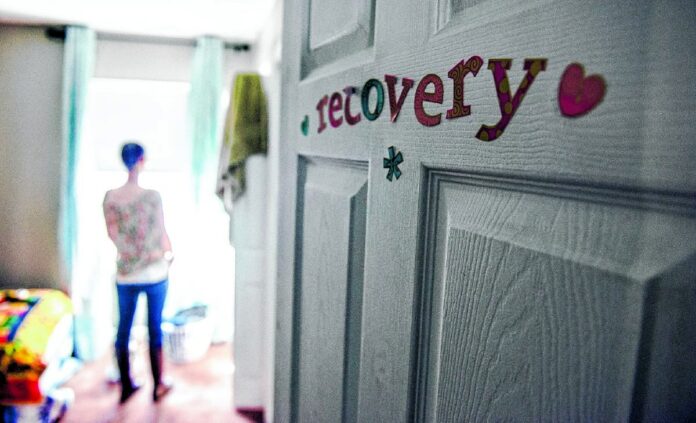
GREENFIELD — Facing a shortage of affordable housing, some local nonprofits are hoping funding from the American Rescue Plan can help.
“It’s dire, to be honest,” Linda Ostewig, director of the Talitha Koum Recovery House, said of the need for affordable housing in Hancock County. She said a shortage of housing has left many of the women who go through Talitha Koum’s addiction recovery program searching fruitlessly for a place to live for months or sometimes years.
The county will receive approximately $15.6 million from the American Rescue Plan Act, which President Joe Biden signed in March. It hopes to invest the money mainly in nonprofit groups and infrastructure, and Ostewig is hoping it could give a boost to the creation of affordable housing connected to Talitha Koum.
Ostewig said many of the women she works with have full-time jobs but still can’t afford rent. Since many of them have children, they are looking for places with at least two bedrooms, and some have evictions or criminal convictions on their record that can put off landlords.
“It’s few and far between that you can find a $650 two-bedroom apartment,” she said.
People who go through the program typically have close ties to Hancock County, but Ostewig said the high cost of living is making it hard for them to stay in the community.
“I’ve had two girls that had to leave the county, and they had jobs here,” she said, adding that one had recently been hired by Hancock Regional Hospital after getting certified as a medical assistant.
Ostewig said she’d like to find a property to purchase that could be converted into affordable apartments women could rent for a lower cost than market-rate units, transitional housing that would allow them to still be tied to Talitha Koum but live independently and with their children. She would also consider purchasing several houses that could be broken up into housing.
With property values in Greenfield so high, Ostewig said she isn’t expecting to be able to pay the full cost of a property purchase with ARP money, but it could provide an initial boost that would show the project is viable and allow her to solicit donations.
Keely Butrum, a member of the county council who is on the committee studying how to use ARP money, said nothing is official yet and the county has been waiting for months to receive final guidelines on how the federal dollars can be used.
In a recent study, an organization focused on housing affordability found that Hancock County lacks the housing units needed for the people in its lowest quarter of income earners to find somewhere to live.
Prosperity Indiana’s report found that statewide, there are 37 units of affordable housing available for every 100 households in the lowest income category. Additionally, 72% of renters in the lowest income category are “severely cost-burdened,” meeting they spend half or more of their income on rent.
In Hancock County, it found, there are only about 26 affordable housing units available for every low-income household, and 78% of low-income renters were severely cost-burdened.
The director of another nonprofit, Andrea Mallory of Hancock Hope House, agreed that the high cost of rent and low availability of housing has become an increasing problem. Mallory said it has led to people staying at Hope House — the county’s shelter for homeless people and those in transition — for longer periods of time, even when they are working jobs that would once have allowed them to easily pay rent.
“You could have $10,000 in savings, and no one can find anywhere to go,” she said.
Mallory said she recently went with a resident to look at a potential place to rent — a hotel room where the monthly cost would be $900.
An affordable-housing complex operated by a nonprofit could be a potential solution, Mallory said, but it would have to be a sizable one, ideally with 50 to 100 units. She said the unmet need for affordable housing in Hancock County is larger than many people realize, with many residents who are avoiding homelessness by moving in with extended family members in cramped living spaces.
Until then, Mallory said, some probably will likely continue to stay at the Hope House for long periods.
“We can’t kick them out just because they can’t find a place to go,” she said.
